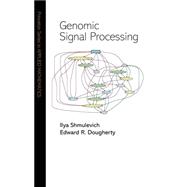
Note: Supplemental materials are not guaranteed with Rental or Used book purchases.
Purchase Benefits
What is included with this book?
| Preface | p. ix |
| Biological Foundations | |
| Genetics | p. 1 |
| Nucleic Acid Structure | p. 2 |
| Genes | p. 5 |
| RNA | p. 6 |
| Transcription | p. 6 |
| Proteins | p. 9 |
| Translation | p. 10 |
| Transcriptional Regulation | p. 12 |
| Genomics | p. 16 |
| Microarray Technology | p. 17 |
| Proteomics | p. 20 |
| Bibliography | p. 22 |
| Deterministic Models of Gene Networks | |
| Graph Models | p. 23 |
| Boolean Networks | p. 30 |
| Cell Differentiation and Cellular Functional States | p. 33 |
| Network Properties and Dynamics | p. 35 |
| Network Inference | p. 49 |
| Generalizations of Boolean Networks | p. 53 |
| Asynchrony | p. 53 |
| Multivalued Networks | p. 56 |
| Differential Equation Models | p. 59 |
| A Differential Equation Model Incorporating Transcription and Translation | p. 62 |
| Discretization of the Continuous Differential Equation Model | p. 65 |
| Bibliography | p. 70 |
| Stochastic Models of Gene Networks | |
| Bayesian Networks | p. 77 |
| Probabilistic Boolean Networks | p. 83 |
| Definitions | p. 86 |
| Inference | p. 97 |
| Dynamics of PBNs | p. 99 |
| Steady-State Analysis of Instantaneously Random PBNs | p. 113 |
| Relationships of PBNs to Bayesian Networks | p. 119 |
| Growing Subnetworks from Seed Genes | p. 125 |
| Intervention | p. 129 |
| Gene Intervention | p. 130 |
| Structural Intervention | p. 140 |
| External Control | p. 145 |
| Bibliography | p. 151 |
| Classification | |
| Bayes Classifier | p. 160 |
| Classification Rules | p. 162 |
| Consistent Classifier Design | p. 162 |
| Examples of Classification Rules | p. 166 |
| Constrained Classifiers | p. 168 |
| Shatter Coefficient | p. 171 |
| VC Dimension | p. 173 |
| Linear Classification | p. 176 |
| Rosenblatt Perceptron | p. 177 |
| Linear and Quadratic Discriminant Analysis | p. 178 |
| Linear Discriminants Based on Least-Squares Error | p. 180 |
| Support Vector Machines | p. 183 |
| Representation of Design Error for Linear Discriminant Analysis | p. 186 |
| Distribution of the QDA Sample-Based Discriminant | p. 187 |
| Neural Networks Classifiers | p. 189 |
| Classification Trees | p. 192 |
| Classification and Regression Trees | p. 193 |
| Strongly Consistent Rules for Data-Dependent Partitioning | p. 194 |
| Error Estimation | p. 196 |
| Resubstitution | p. 196 |
| Cross-validation | p. 198 |
| Bootstrap | p. 199 |
| Bolstering | p. 201 |
| Error Estimator Performance | p. 204 |
| Feature Set Ranking | p. 207 |
| Error Correction | p. 209 |
| Robust Classifiers | p. 213 |
| Optimal Robust Classifiers | p. 214 |
| Performance Comparison for Robust Classifiers | p. 216 |
| Bibliography | p. 221 |
| Regularization | |
| Data Regularization | p. 225 |
| Regularized Discriminant Analysis | p. 225 |
| Noise Injection | p. 228 |
| Complexity Regularization | p. 231 |
| Regularization of the Error | p. 231 |
| Structural Risk Minimization | p. 233 |
| Empirical Complexity | p. 236 |
| Feature Selection | p. 237 |
| Peaking Phenomenon | p. 237 |
| Feature Selection Algorithms | p. 243 |
| Impact of Error Estimation on Feature Selection | p. 244 |
| Redundancy | p. 245 |
| Parallel Incremental Feature Selection | p. 249 |
| Bayesian Variable Selection | p. 251 |
| Feature Extraction | p. 254 |
| Bibliography | p. 259 |
| Clustering | |
| Examples of Clustering Algorithms | p. 263 |
| Euclidean Distance Clustering | p. 264 |
| Self-Organizing Maps | p. 265 |
| Hierarchical Clustering | p. 266 |
| Model-Based Cluster Operators | p. 268 |
| Cluster Operators | p. 269 |
| Algorithm Structure | p. 269 |
| Label Operators | p. 271 |
| Bayes Clusterer | p. 273 |
| Distributional Testing of Cluster Operators | p. 274 |
| Cluster Validation | p. 276 |
| External Validation | p. 276 |
| Internal Validation | p. 277 |
| Instability Index | p. 278 |
| Bayes Factor | p. 280 |
| Learning Cluster Operators | p. 281 |
| Empirical-Error Cluster Operator | p. 281 |
| Nearest-Neighbor Clustering Rule | p. 283 |
| Bibliography | p. 292 |
| Index | p. 295 |
| Table of Contents provided by Ingram. All Rights Reserved. |
The New copy of this book will include any supplemental materials advertised. Please check the title of the book to determine if it should include any access cards, study guides, lab manuals, CDs, etc.
The Used, Rental and eBook copies of this book are not guaranteed to include any supplemental materials. Typically, only the book itself is included. This is true even if the title states it includes any access cards, study guides, lab manuals, CDs, etc.